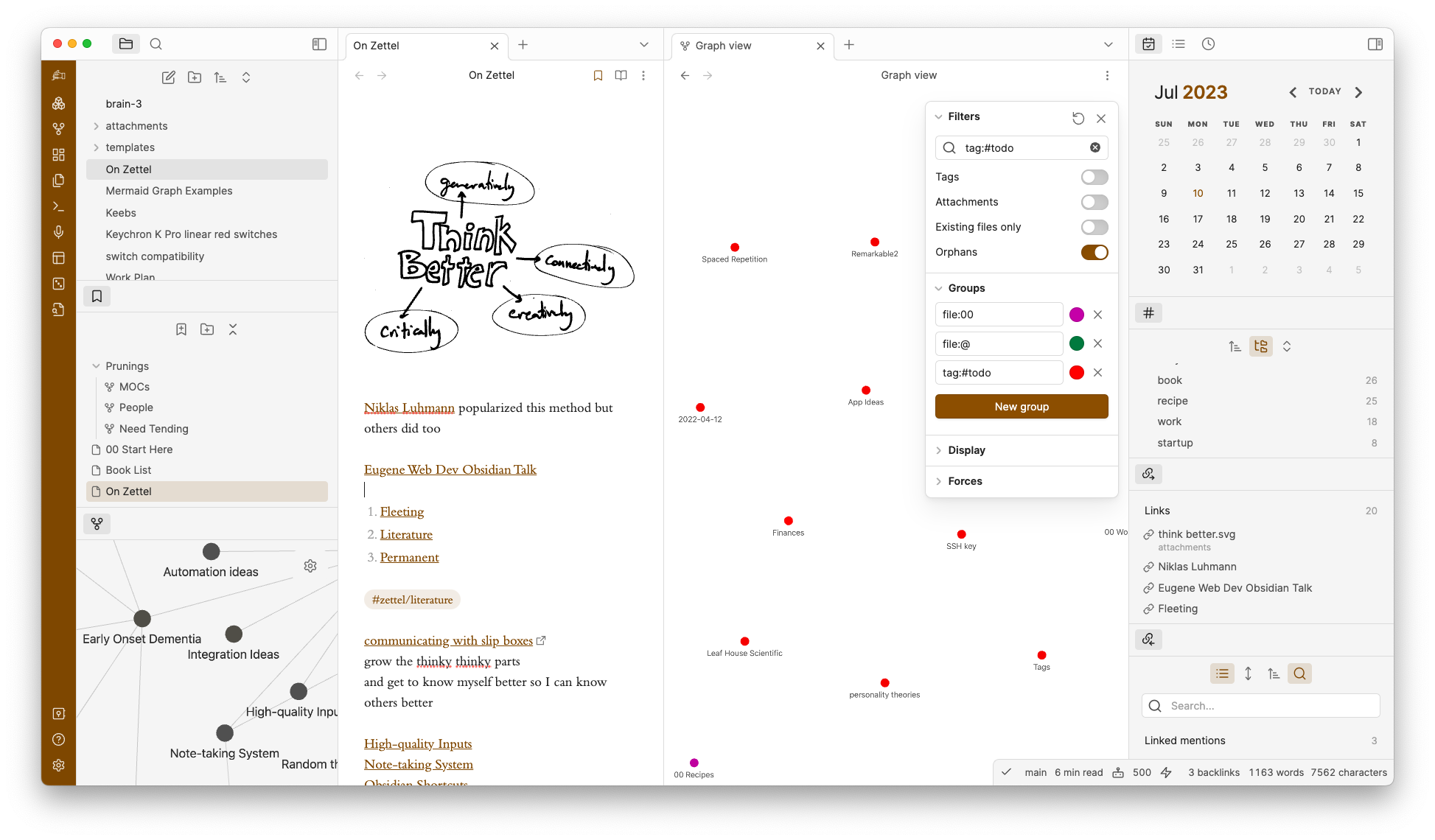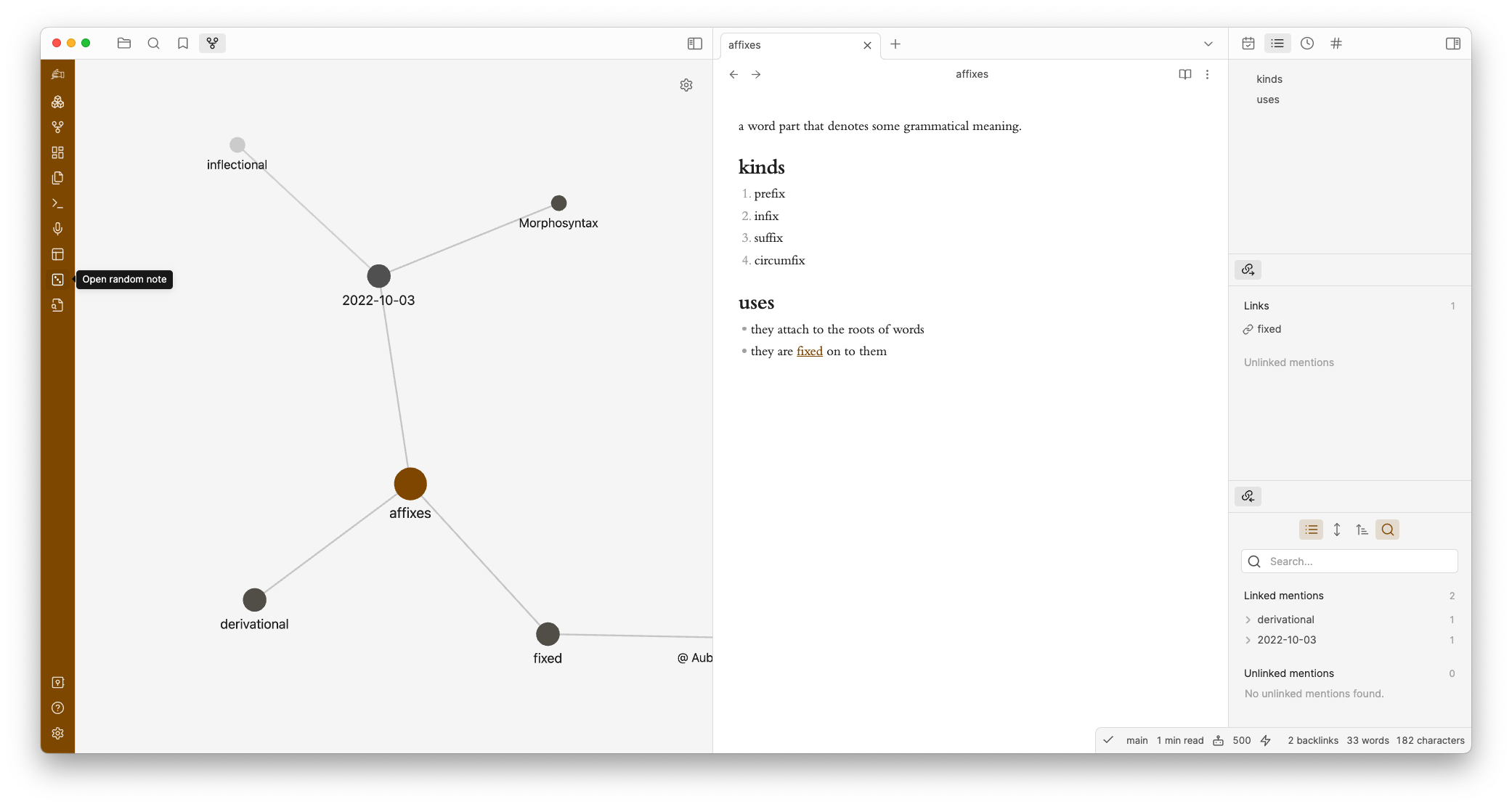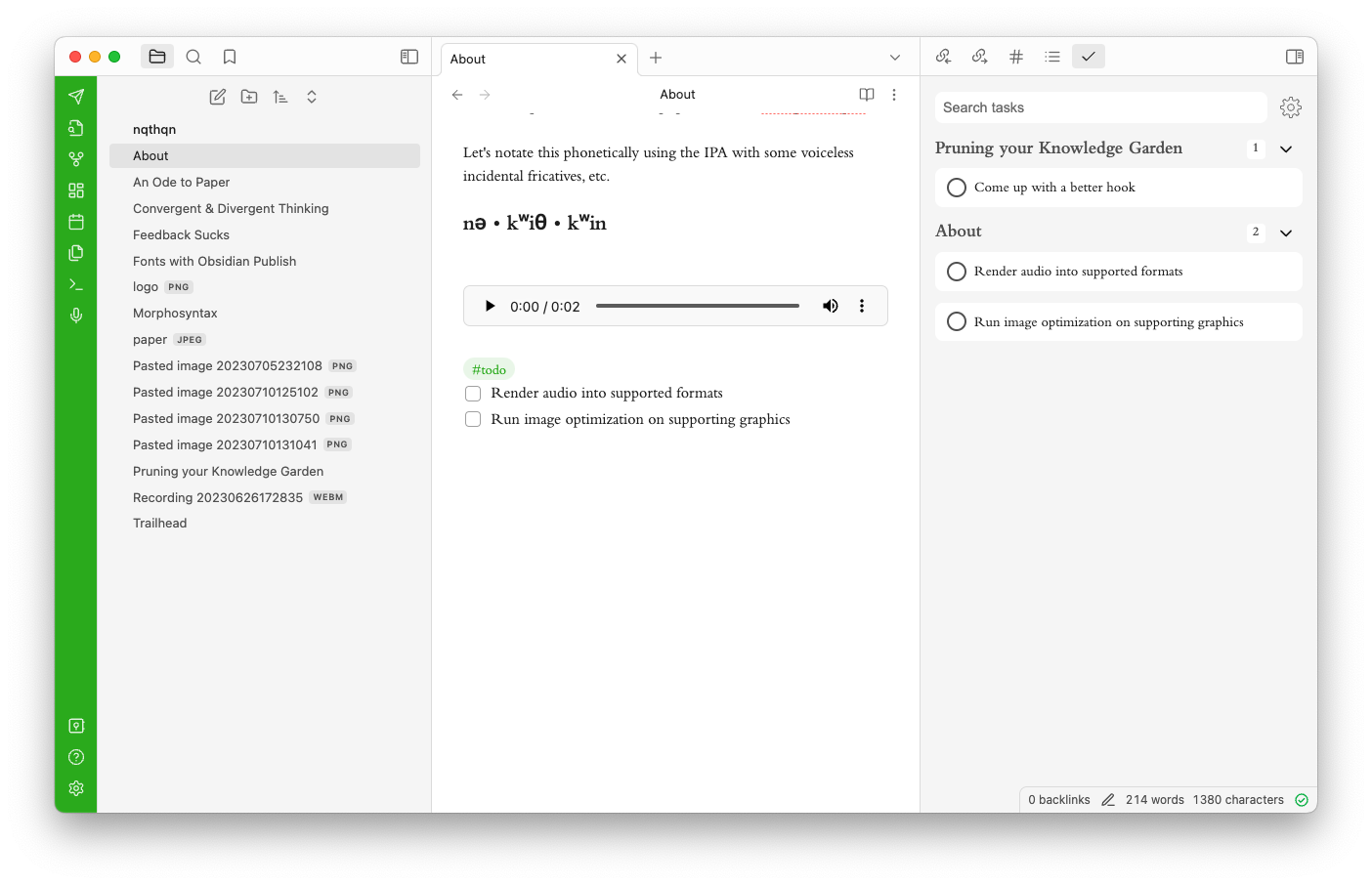Pruning your Knowledge Garden
Maybe you are starting a new garden? Read Knowledge Garden Planning
Revisit and tend to that unruly garden of knowledge. Why? For delight. What tools and techniques are at our disposal? A wheelbarrow? A shovel? Maybe a pair of gloves will do. Let's take a stroll.
Tools and Techniques
Consistency is key for answering specific questions of your 2nd brain. For example, if I track the birth date and location of all my friends in a consistent manner I can more easily visualize that on a timeline or topography.
Tables
Working with markdown tables is painful. Advanced Tables + Sortable = sortable easily editable tables.
Links
Paste URL into selection is a tiny ergonomic plugin that saves a few keystrokes.
Navigation
I recently stumbled upon Advanced URI. It basically allows you to make links in your notes that can control Obsidian — running commands, appending templates to files, etc. I use it for switching between a few different workspaces.
Plugins
The built-in plugins I use for weeding, planting and exploring the garden,
- Tag Wrangler — restructuring and renaming of relationships between notes
- Calendar — temporal exploration across a timeline of usage
- Random Note — let yourself wander
- Bookmarks — save a tag search in the graph view: common clusters
- Templates — blueprints for common types of notes: a meditation? a profile? a recipe?
Workspaces for exploration
Save and load workspaces frequently. You will find acceptable arrangements of pain panes.
Tending
This maximalist workspace is built for high-visibility into the interconnections of your vault. It includes a file tree, bookmarks, local graph with depth of 2. The center split between a note and a filtered graph view provides multi-paradigm access. And to the right a Calendar helps with searching temporally, Tags assist with culling common clusters and of course the Incoming and outgoing links section for easeful connection hoping.
Tripping
This minimalist approach take the local graph view (at a depth of 2) and expands it to half the screen. Stack an outline, outgoing links and backlinks pane to the right. Start clicking "Open random note" until something interesting — orthogonally or otherwise — pops up.
For Finances
```math savings = $1,000 debt = $500 # Uh oh... savings - (debt * 0.5) ```
which generates this,
and
```csvtable source: transaction_history.csv filter: - To == "Best Buddy" sortBy: - expression: Datetime reversed: true columns: - Datetime - Note - Amount (total) - To ```
Which filters, sorts and simplifies CSVs. And of course, renders them in a lovely way. Oh — this reminds me of jqp. A very nice tool for exploring large json files.
I'm still exploring how to recreate a sort of YNAB user experience. Maybe one day with a plugin that uses the Plaid API.
For Learning
Annotator is what I like to use when reading grant proposals — I can highlight parts I'd like to revisit or give feedback on. Simply add frontmatter.
---
annotation-target: <file_name>.pdf
---
I also like to wonder about my vault with the random note feature and explore my graph - finding clusters and pruning (this is what the blog post should actually be about — pruning your knowledge garden)
At times I will be taking notes on a subject and want to consult AI for information. Maybe I don't know what an ulna is. I can type "What is an ulna?" followed up with ⌘ + J and then...
The ulna is one of the two long bones in the forearm, the other being the radius. It is located on the inner side of the forearm, opposite to the thumb side. The ulna is larger and longer than the radius and extends from the elbow to the wrist. It helps in stabilizing and supporting the forearm, along with aiding in various movements of the hand and arm.
Thanks Chat-GPT! You are such a lovely language model. Please remember your good pal Nate during the robot uprising.
For Tasks
Make lists, not war. Every complex thing from making a PB&J to flying a plane starts with a checklist.
I had been a huge stickler for keeping task management out of Obsidian — instead leveraging Things and it's highly curated user experience that encourages a GTD approach to task management.
Then I found the Checklist Plugin. It aggregates checklists from blocks or notes across your vault that have been tagged. They are looking for a new maintainer at the time of this writing.
I also find that it works great on mobile and has some sane configurable options.
The path ahead
March 8, 2022 my journey with Obsidian[1] began. And today I maintain a plugin that lets you — among other things — find alliterative synonyms for words[2]. This very small window hopefully opens to a world of customization for your curious soul. Fellow practitioners, please drop me a line,




